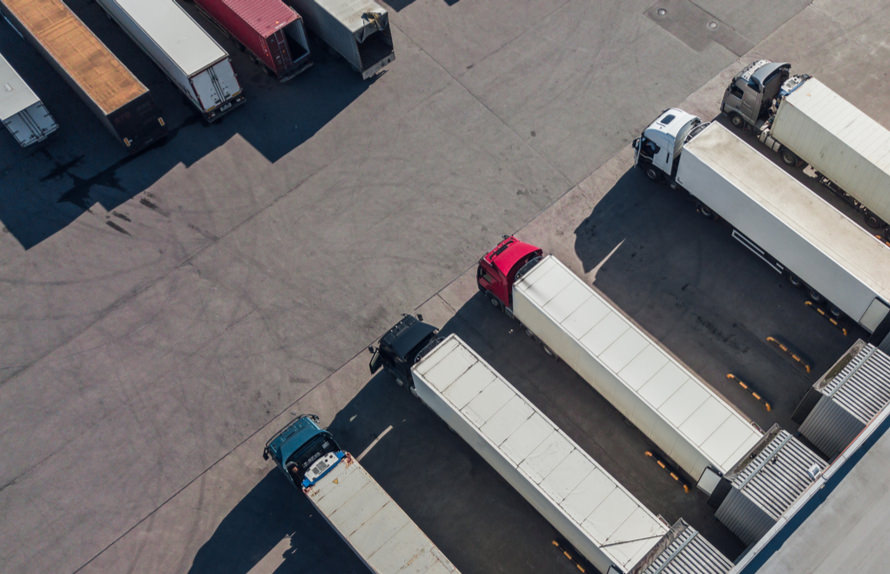
Trade tensions have reached a new peak in 2025, with rising tariffs, retaliatory duties, and stricter customs enforcement disrupting global supply chains. Businesses across industries are feeling the impact, especially those dependent on cross border fulfillment. In 2022, the global B2B ecommerce market reached a staggering US$20.4 trillion underscoring just how high the stakes are as international logistics models are forced to adapt.
As a result, the traditional business-to-business (B2B) fulfillment model—characterized by large-scale, seasonal shipments and reliance on ocean freight—is being fundamentally reshaped. Lead times are too long, risk exposure is too high, and static inventory strategies can no longer keep up with market volatility.
B2B brands are now expected to operate with the same agility, automation, and responsiveness as their B2C counterparts, meeting rising expectations for speed, transparency, and cost-efficiency in international shipping.
From Bulk to Nimble: The Shift in B2B Fulfillment Models
Historically, B2B logistics operated like clockwork: businesses planned two major seasonal shipments each year, shipped goods in large ocean containers, and stored inventory in centralized warehouses until orders were fulfilled. This approach worked in an era of relatively stable trade conditions and predictable consumer demand.
But that model is quickly eroding. Today’s global commerce landscape is shaped by rapidly changing customer preferences, tariff volatility, and disrupted shipping lanes. In response, brands are seeking more nimble wholesale and sourcing strategies with smaller more agile drops.
A useful comparison is the transformation of the fashion industry, particularly the model pioneered by Zara. Traditionally, fashion brands operated with long production cycles and seasonal collections. Zara disrupted this by drastically reducing the time between design and delivery—often turning around new collections in as little as five weeks.
They accomplished this by streamlining production, sourcing closer to demand, and using fast transit methods to replenish inventory based on real-time sales data. As a result, Zara could respond rapidly to changing consumer preferences, minimizing overstock and markdowns. Temu, an apparel and consumer goods marketplace, took this one step further with their on-demand model which shortens the cycle even more and strong domination of the fast fashion industry.
Direct to consumer (DTC) brands of all sizes are now borrowing a page from this playbook and following a similar path. Rather than relying on bulk ocean shipments twice a year, brands are increasingly moving toward frequent, smaller shipments that align more closely with actual demand and building resilience in their supply chains. This model reduces lead times, improves cash flow, minimizes tariff impacts and enables them to react to market changes without being burdened by excess inventory.
An example in the beauty industry is the prestigious brand, Estee Lauder, who has partnered with delivery services such as Uber to offer same-day delivery, catering to consumers’ demand for rapid product access.
A striking new development has further accelerated this: air freight is becoming cost-competitive with ocean freight. According to McKinsey, a supply-demand imbalance and conflict in the Red Sea are causing delays and increased costs in ocean freight, shrinking the pricing gap between air and ocean options. As a result, brands can now justify the speed and flexibility of air freight, even for B2B orders.
This shift isn’t just a short-term response to pandemic disruptions or temporary cost changes—it reflects a broader and more permanent change in buyer expectations. As consumer demand for speed, transparency, and flexibility becomes the norm, wholesale merchants are increasingly expected to deliver the same level of service found in direct-to-consumer channels.
The result is a long-term trend away from rigid, ocean-based models toward faster, more agile fulfillment strategies centered on air freight. This is not a temporary adjustment, but a structural evolution in how B2B logistics must operate moving forward.
Tariffs and the Push for Agility
Unpredictable as ever, the tariff landscape in 2025 has upended traditional sourcing channels for many brands. New duties on made in China goods, retaliatory trade measures, and tightened de minimis thresholds have dramatically increased landed costs. These changes are pressuring brands to minimize exposure and manage risk more proactively.
The shift toward smaller, just-in-time shipments is one such strategy. Instead of importing entire container loads and risking high tariff bills on unsold inventory, companies are increasingly embracing tariff deferment models—where duties are only paid once a product is sold. This model not only helps businesses stay agile in the face of trade fluctuations but also improves cash flow by tying cost to revenue.
The implications are clear: fulfillment agility isn’t just about customer satisfaction—it’s now a financial necessity.
B2B is Catching up to B2C in Automation
Traditionally, B2B fulfillment has lagged behind B2C in terms of technology and efficiency. Disjointed systems for quoting, customs brokerage, global shipping, customs clearance and warehouse management have led to fragmented supply chains with limited visibility.
But change is underway. Modern B2B logistics is embracing automation and integration, closing the decade-long gap between B2B and B2C. Businesses are adopting delivered duty paid (DDP) models and platform-based shipping networks to simplify cross-border operations, reduce manual overhead, protect margins and ensure smoother customs clearance.
There is extra complexity in customs and compliance automation with large B2B shipments and differences in admissibility for various commodities in each country alongside clearance rails that can now be automated with machine learning and AI.
The results?
- Lower operating costs: Automation and consolidated shipping workflows reduce labor, storage, and brokerage expenses across the supply chain.
- Predictable margins: With landed costs calculated upfront and DDP models in place, businesses can maintain pricing consistency and avoid unexpected fees.
- Faster shipping times: Air freight and dynamic routing dramatically shorten transit windows, ensuring faster delivery to buyers.
- Full visibility from origin to delivery: Integrated systems provide end-to-end tracking, allowing for real-time updates, better customer communication, and fewer service disruptions.
This evolution isn’t just good logistics—it’s smart business.
Emerging Models: B2B2C
The lines between B2B and B2C are blurring. Brands are increasingly deploying hybrid fulfillment models that allow them to respond to actual demand, whether that comes from wholesale partners or end consumers.
B2B2C stands for Business-to-Business-to-Consumer, a hybrid fulfillment model where a business sells products to another business (like a retailer, distributor, or marketplace), which then sells directly to the end consumer. Most importantly, the original brand often retains control of the customer experience and fulfillment.
This agile and nimble model is especially relevant for companies sourcing from China, where tariff exposure is high and supply chains are increasingly under pressure. On the China-to-U.S. route in particular, these fulfillment strategies are enabling brands to remain competitive by shifting from bulk imports to smaller, order-driven shipments. This allows for tariff deferment, so they are not paying tariffs ahead of time for their entire inventory but only as they are sold.
By using international air services, including both standard and express transit options, businesses can meet delivery expectations while avoiding the long lead times and uncertainty of ocean freight. This responsiveness allows for timely fulfillment of consumer orders and provides a clear advantage in dynamic markets.
This agility is critical in a world where tariffs can shift overnight, and buyer behavior is increasingly unpredictable.
What This Means for 3PLs and Merchants
Both merchants and their third-party logistics (3PL)partners are feeling the pressure to evolve. For 3PLs, this means moving beyond static warehousing models and offering dynamic, tariff-aware fulfillment solutions. As more shipments originate from overseas manufacturers and rely on air networks, 3PLs must build capabilities that include cross-border DDP shipping, automated customs clearance, and flexible routing intelligence.
For merchants, it’s about choosing partners and platforms that can support this evolution. Businesses need logistics infrastructure that integrates seamlessly across systems, supports direct-to-customer and direct-to-wholesale fulfillment, and ensures compliance in every market.
The new standard is clear: automation, agility, and cost control across borders.
The B2B supply chain is no longer built for stability—it’s built for adaptability. As tariffs, freight costs, and global trade dynamics continue to evolve, merchants and 3PLs that embrace agile fulfillment strategies will be best positioned to thrive.
By leveraging automation, adopting flexible shipping models, and aligning inventory with real demand, businesses can reduce risk, improve cash flow, and maintain competitive advantage—even in the most unpredictable of markets. Rethink your B2B supply chain now or risk falling behind.
Rathna Sharad, founder and CEO of FlavorCloud, has 20+ years of experience working in global supply chain and international trade logistics and has enabled over 10 modern ecommerce experiences, the combination of which has positioned her perfectly to create an “anywhere-to-anywhere” logistics solution that enables any brand to go global. As a founding member of the ad platform team at Microsoft and product leader for Bing Ads, Sharad saw the first signs; with a 2006-era birds eye view of the search ad ecosystem across publishers, it was clear to her: cross-border is the way of the future.
About FlavorCloud
FlavorCloud is an “anywhere to anywhere™” logistics platform that solves the enormous challenges of navigating the antiquated, manual, and deeply fragmented global shipping and trade landscape. With a best-in-class suite of products, you can enable cross-border international shipping in just one day. Backed by an AI-optimized network, our mission is to simplify global ecommerce while you focus on what you do best, growing your business.
Tags: International







